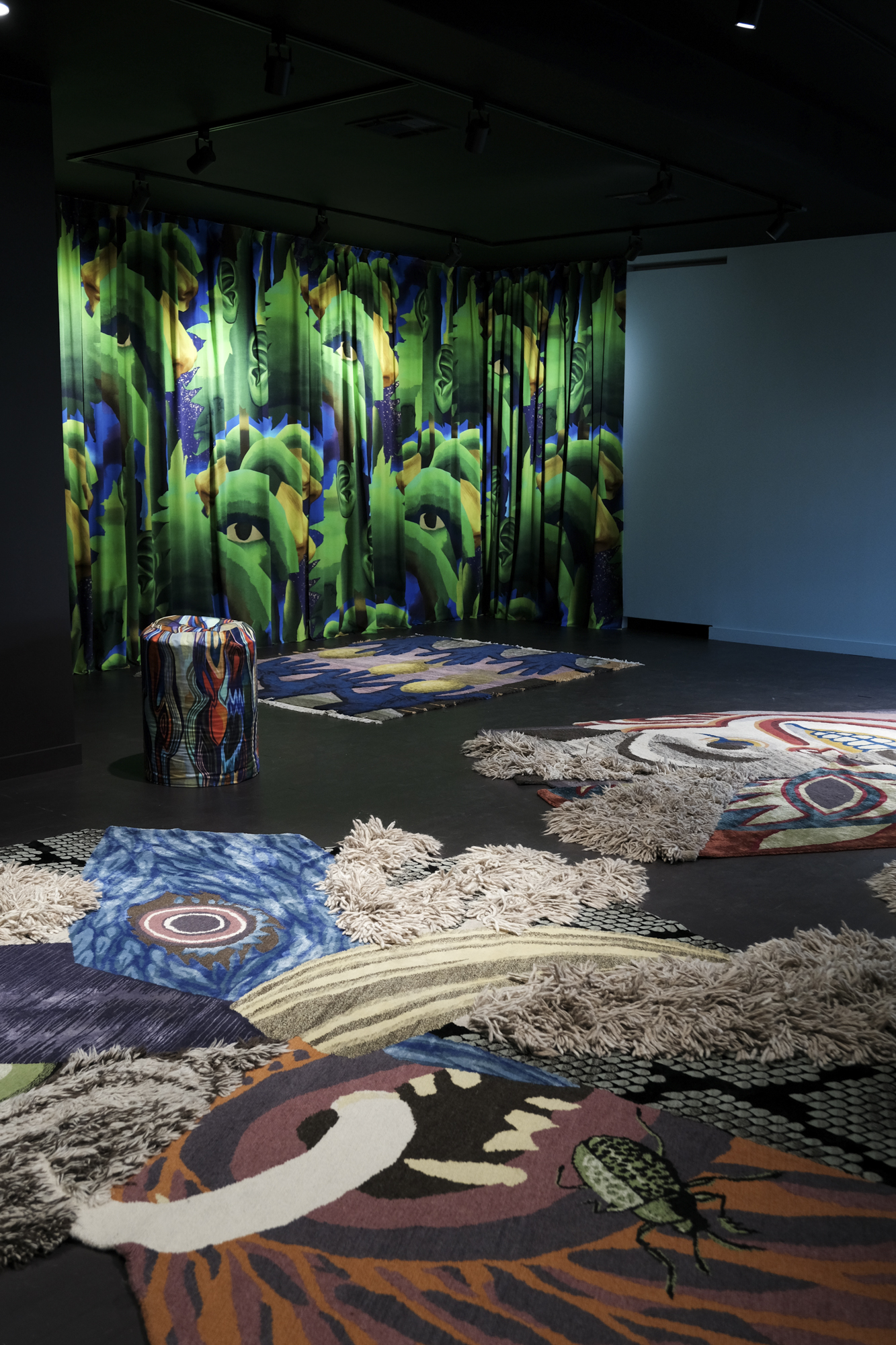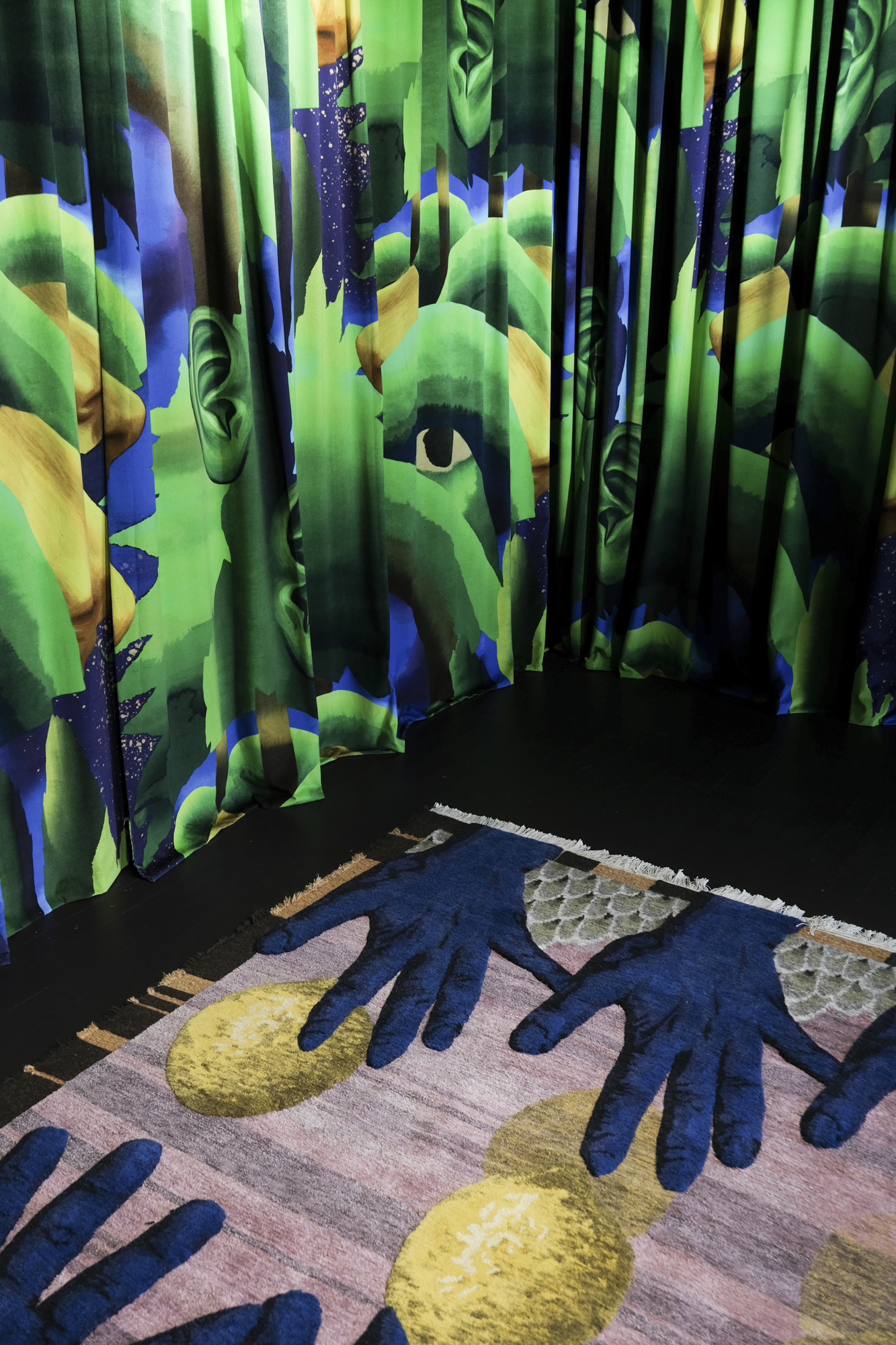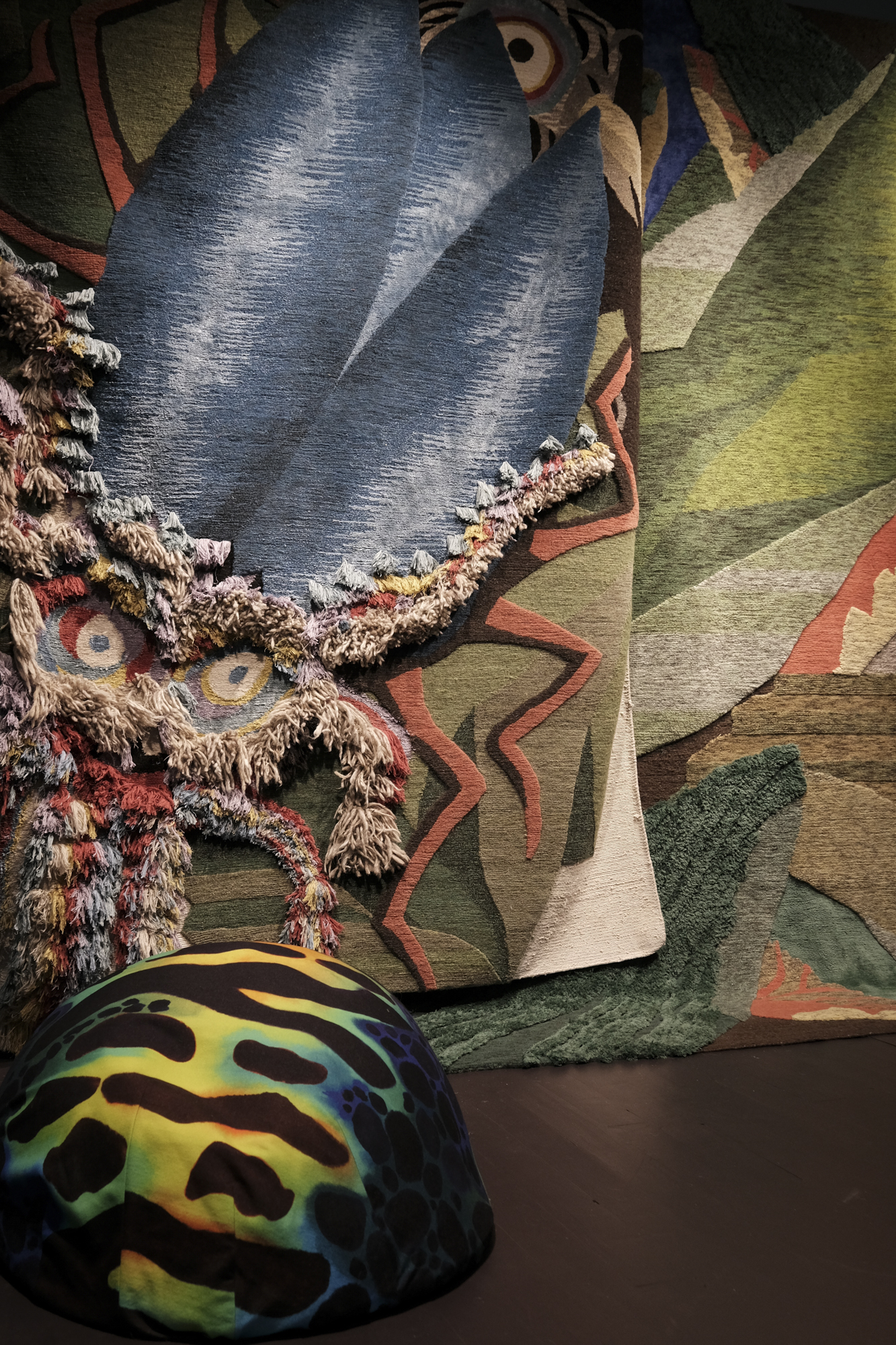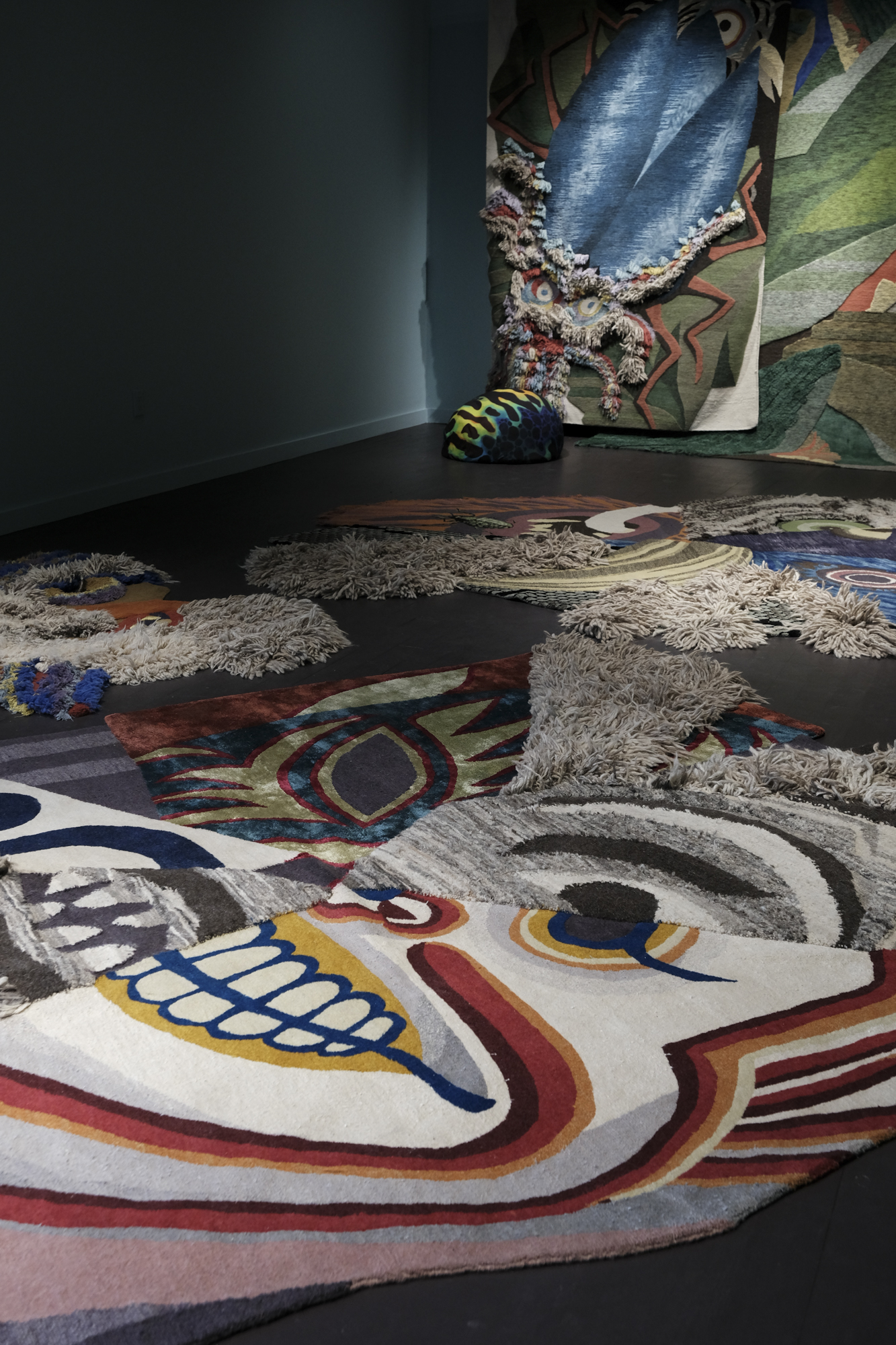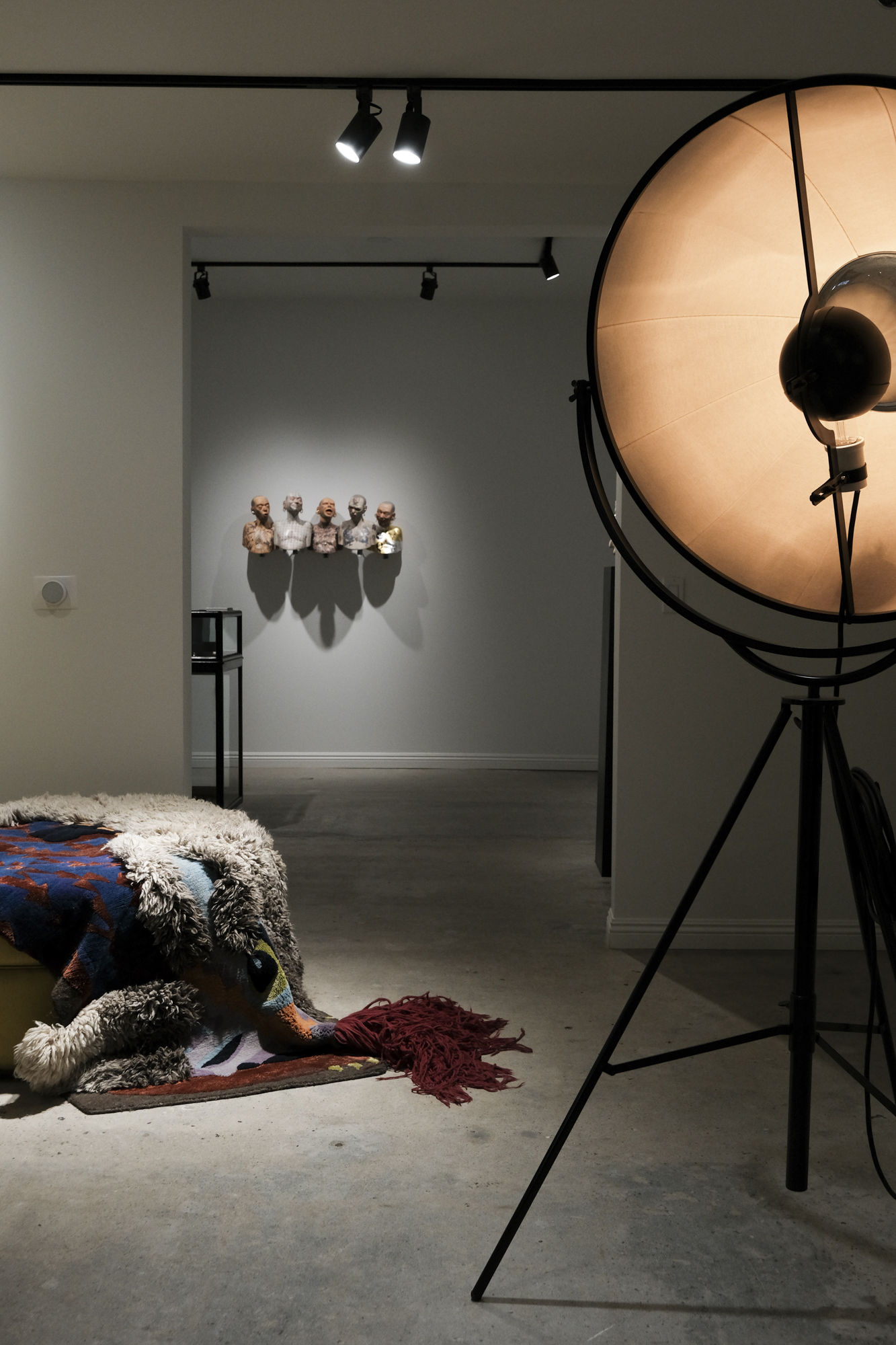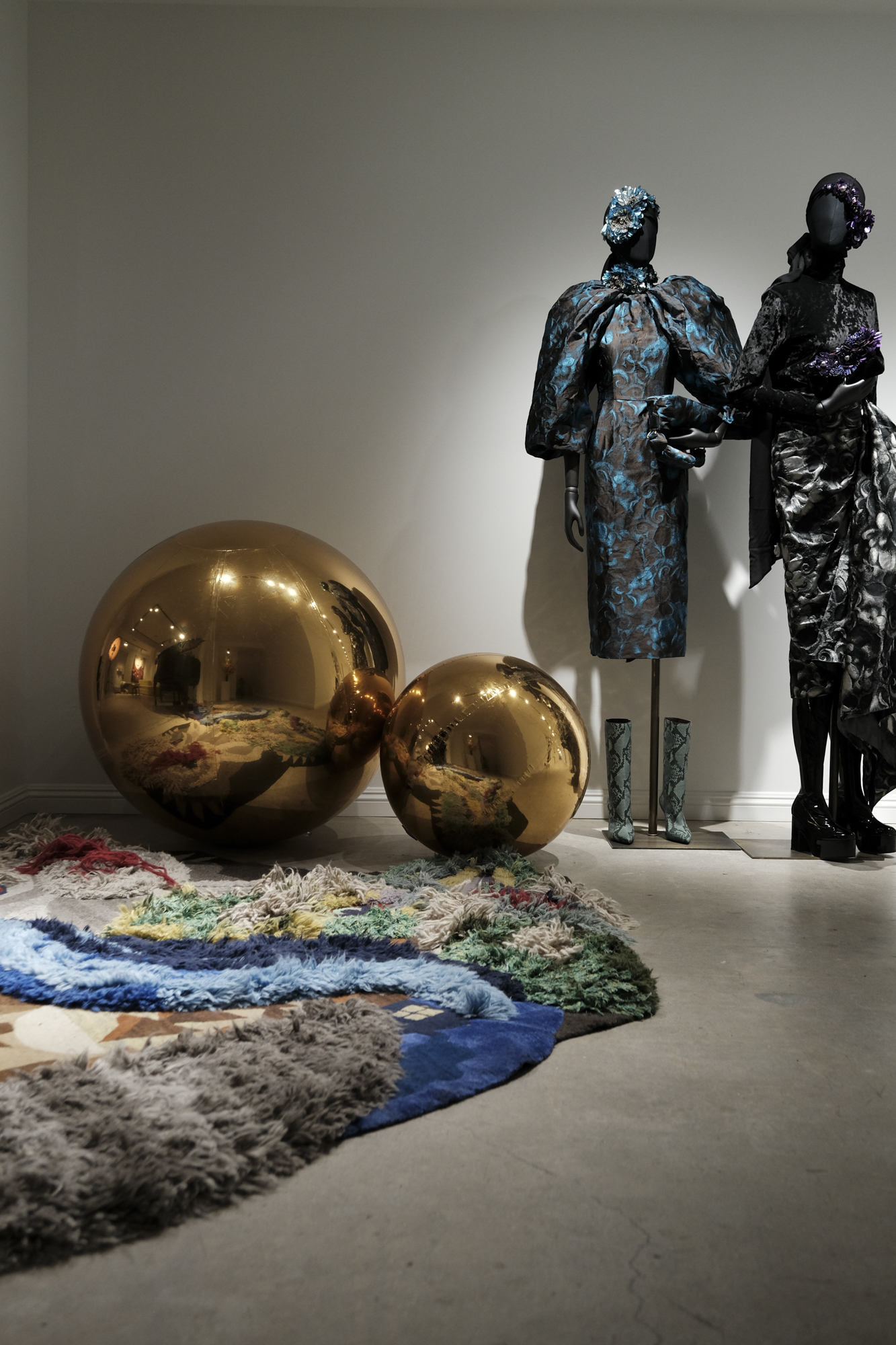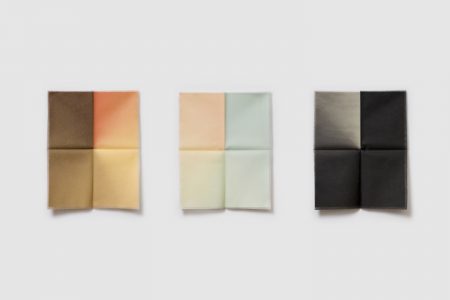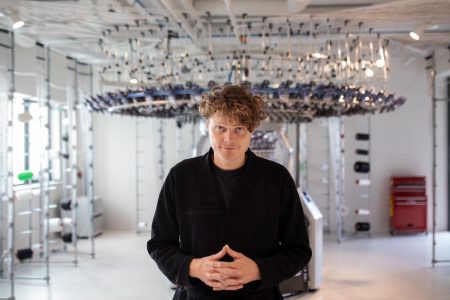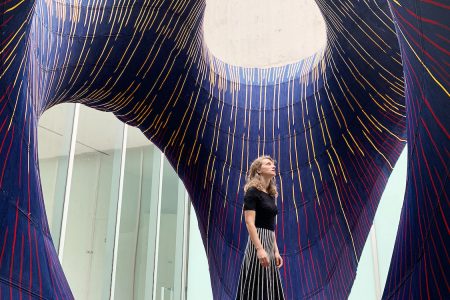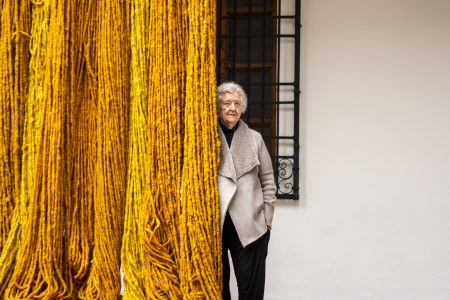Christoph Hefti: On A Journey Through Textiles
Christoph Hefti is a textile designer whose playful and curious practise spans decades in and beyond the realm of fashion. In this extensive interview, TLmag catches up with Hefti to talk about his latest solo show at Dries van Noten’s ‘Little House’ in LA.
After studying textile design in Zurich and fashion at Central Saint Martins in London, textile designer Christoph Hefti started his career designing for Jean-Paul Gaultier in Paris and Dries Van Noten in Antwerp. For the latter, he spent 13 years as a creative assistant and was responsible for the printed fabrics, including research, design and development. Since embarking on his freelance career, Hefti has worked for various fashion houses, including Lanvin, Balenciaga and Mugler — and has spent the last couple of years developing his own independent practice. Interweaving performing arts, video, costume design and live art together with textiles and design objects, Hefti has managed to create his own creative universe. His most recent solo exhibition, ‘…where?…there! … where?’, focuses on nature and highlights the designer’s iconic hand-knotted rugs. With this solo show, the textile designers’ career seems to have come full circle when, upon invitation of MANIERA, he presents his work at Dries van Noten’s new art gallery in Los Angeles. TLmag sat down with Christoph, discussing the distinction between artists and designers (or if there even is one), the journey his carpets have brought him on and what it was like to present these new works in van Noten’s ‘The Little House’.
TLmag: On your Instagram bio you (ironically) pose the question “Artist or Designer, you decide”. I think this is a discussion a lot of artists and designers have among themselves. Do you think that there is a real defined distinction between these two “careers”? Does it have to be one or the other?
Christoph Hefti (CH): It’s a question that follows you around your whole career. That’s especially the case when you work in the way that I work, which I guess is the same way that a lot of artists do: taking inspiration from within and from the society around you. There are periods that you go through where you think, “I don’t care — I’m just doing my work”. On the other hand, you do have eto care a bit — because how you identify yourself decides where the work will end up. Will it end up in a design store, or in an art gallery? Who do you want to attract? So, ultimately, it’s not something you can ignore.
For me, I’d say it’s clear that I’m a designer: I make things that have a specific purpose. My designs might be a bit aesthetically ‘weird’, but they also have a functional use. Whether that is as a carpet, as a vase, a lamp or a furniture piece. The designer nowadays is not primarily seen as the maker of functional objects, but is seen as a scientist or as a problem solver. Additionally, I think that when most people see a design that is different from the norm, it suddenly becomes art — which I think is a bit short sighted.
For example, when my carpets are presented to the public, in design fairs, they are usually hung up on the wall – as though they are art – because that’s the only way that people will consider buying them. For some reason, when I present these rugs as they should be [on the floor], design fair visitors don’t value them as something they can buy. I guess because they are literally walking and stepping over it, which is essentially what a carpet is made for. So there’s always this strange interplay going on there between function and aesthetic.
TLmag: Hearing you talk about your carpets, and seeing you with them as well, it’s clear that these hand-knotted rugs mean a lot to you.
CH: You know, I’ve been a textile designer my whole life — specifically for fashion. When I left the fashion industry a few years ago, I thought I would also have to end my relationship with textiles. But, I was wrong: I found out I could also continue working with textiles as an interior designer. When I started a few years ago with my own practise, I started a bit naively: and I think that’s why these rugs mean so much to me. They’re still small, but they have grown with me throughout this new endeavour. When I started making these carpets, I was really hoping that they would take me on a journey, and they really did. They take me to Kathmandu (Nepal), they take me to Art Basel, they bring me in touch with really great people that challenge my way of thinking and my creativity. They have given me a lot of knowledge about craftsmanship and techniques, and this is only in the past five to seven years. I sometimes have the feeling that I don’t have enough time to do all that I want to with these carpets, they have really become a part of my being.
TLmag: You mentioned how these rugs have taken you to Kathmandu, which is where the specific technique of hand-knotting that makes these rugs stand out so much is implemented. How did this collaboration with the craftspeople in Nepal start, and how has it grown over the last couple of years?
CH: The first time I went it was a very strange experience, I had never been there before and I didn’t really know what to expect. Very quickly though, I found people that were interested in making my carpets, and thinking together with me about how they can be created. The development process was very holistic. It wasn’t just me who was deciding if I wanted to work with them, it was them who were also deciding and if they wanted to work with me. It really clicked right away.
The reason I grew tired of fashion in the first place is because I lost touch with the craftsmanship, the technique. When I got to a certain level, you lose the connection with the technicians and all you end up doing is sending WeTransfer files to each other. With these carpets, I wanted to get back in touch with the people making it, and learn and exchange knowledge along the way. It’s not just about sending over designs and being completely cut off from the making process of these carpets, it really is a collaboration. I go there every year — and I have a connection to Kathmandu. With each visit I go to the same places, and I see the same people working on these carpets that they know also have a connection to.
TLmag: You mentioned earlier how people tend to see objects that differ from the norm as artworks, I think your carpets often get that kind of treatment.
CH: Looking at the history of carpets, I think we are now sitting in probably the most boring period of carpets ever. Especially when we look at how advanced things used to be when it comes to carpet weaving, we have lost so much knowledge. That’s why I like to be advanced and courageous in my carpet designs. First of all, because I feel like there have been wilder and stranger carpets in the past — but also, because I feel really well embedded in that history.
TLmag: Whether you’re working as a fabric designer for Mugler, or you’re working as a textile designer, ceramicist or set designer – it seems like your work really revolves around this idea of storytelling. The patterns, colours, textures that you use really jump out and speak for themselves. How did you first grasp this ephemeral, almost mystical, concept within your work?
CH: I think it’s not something you choose. It’s just something that is in you. It also really depends on how you want to treat your output, whether or not you really want your work to speak for itself. What I do think, even when working with brands like Mugler, storytelling needs an intimate situation for it to emerge within the work.
From myself, I know that I like great stories. Whether it be from mythology, from a film or even from something in InDesign. Even in fashion, when I work for juries, stories are integral to the work. The making of something can become a story, where you can make the process visual and the main storyline is just making people realise how something is put together. I think I have it from my time in fashion that I know how to address and develop these things, and now of course with these carpets I work on, I can go all the way because I am my own boss. I think I’m happy with these carpets because I can really live with and through them. It’s funny, on the one hand, I think I found the carpets, but on the other hand I think the carpets also found me. I think that because carpets also have this longstanding history and tradition of being objects that hold stories in them. In that aspect, I see myself as somebody who is continuing a certain tradition that has always been a part of carpets, even if it is getting somewhat lost in today’s culture.
TLmag: Your own work is incredibly playful, and I think that’s showcased really well in your most recent solo show “…where?…there! … where?” At Dries van Noten’s ‘The Little House’ in LA. You spent 13 years as a creative assistant to Dries Van Noten at his Antwerp atelier; looking back, what is it like to now present your personal/independent work at his first American home?
CH: It feels really, really, really great. Because, we lost touch with one another after I left his atelier. When you leave a company that you’ve worked for after 13 years, a company that I still very much enjoyed being a part of when I made that decision, it feels more like a divorce than a simple decision. I needed to leave that comfort zone in order to do the things I am today, and I do not regret it, but leaving the company felt deeper than I thought it would. I was incredibly happy when Dries approached me for this show, because it felt like the circle was complete. When I left, I knew I wanted to do my own thing but didn’t know what that looked like, now, in this show, I can see the steps I’ve made over the last couple of years and know where I’m going.
Cover Photo: Christoph Hefti by MIKOMIKO STUDIO
